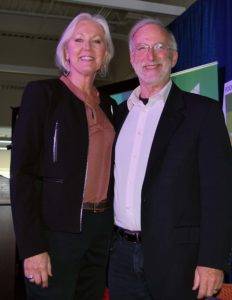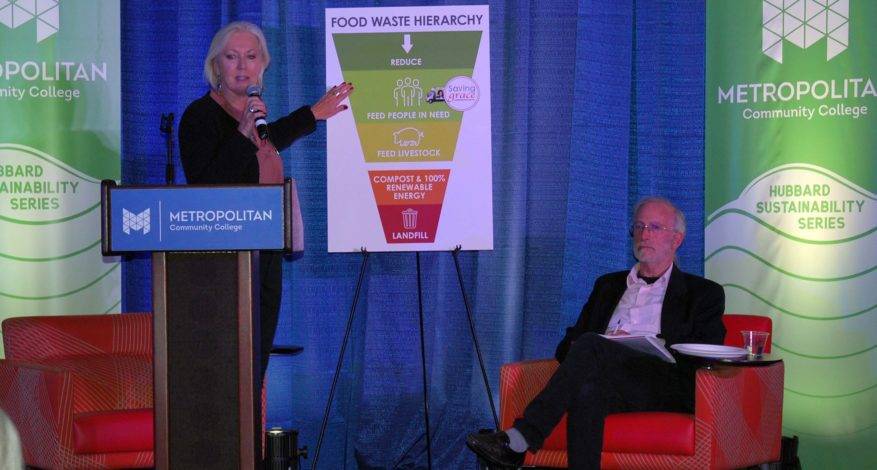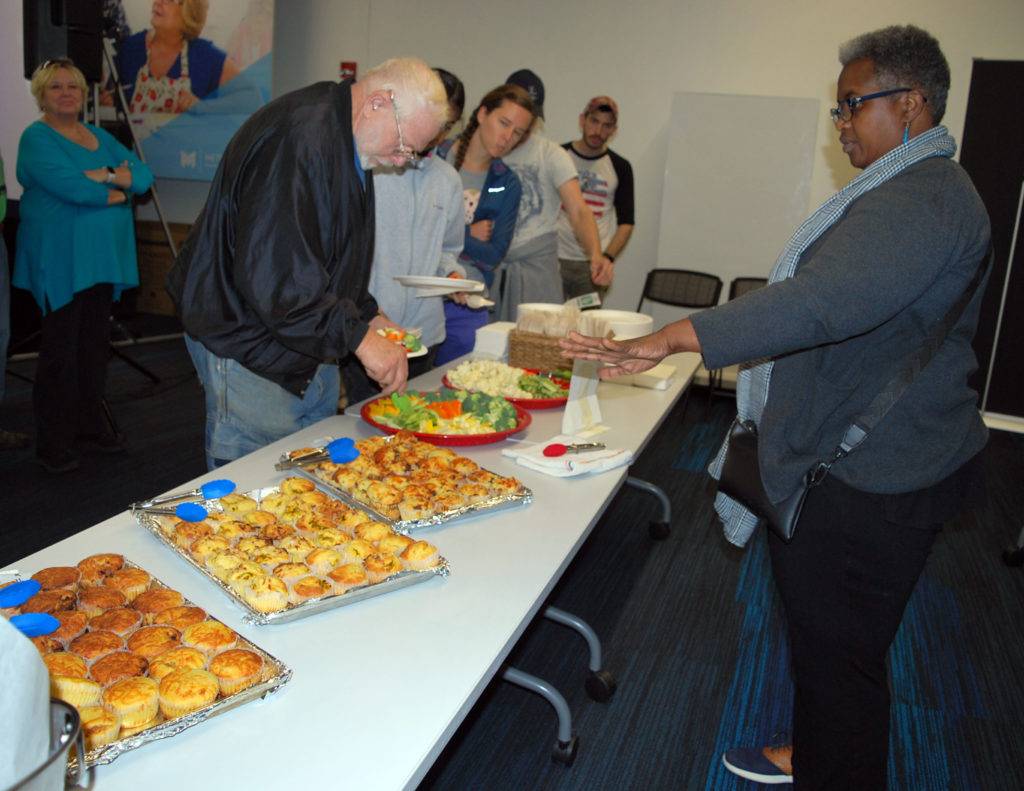Organizations Share Dedication to Connecting Excess Fresh Food with Those in Need
Saving Grace Perishable Food Rescue and AmpleHarvest are both dedicated to connecting excess fresh food with those in need. The founders/CEOs of the two organizations recently shared their stories of creating programs to address opportunities in their communities. The two advocates were guest speakers for the Oct. 17 “Sustainable Solutions to Food Waste” presentation that was part of the Hubbard Sustainability Series.

Beth Ostdiek Smith, founder and CEO of Saving Grace, asked the audience, “How many of you ever wondered what happens to all that extra food when you go out to dinner or an event?” That question was instrumental in the launch of Saving Grace in 2013.
She has learned, though, that restaurants, tend to manage their food well, so most excess food rescued by Saving Grace comes from grocery stores and warehouses. One source for surplus food that wasn’t obvious at first is convenience stores. The QT shops in Omaha donate some 750 to 1,000 items each week to Saving Grace. A few churches and cafeterias also donate to Saving Grace.
There’s more opportunity to feed the hungry with surplus perishable food that would otherwise go to waste. “We are just getting started,” Smith said.
Gary Oppenheimer, founder and executive director of AmpleHarvest.org, explained how this nationwide program allows home gardeners to donate their excess produce. Thirty-five percent of all households grow food for themselves, and they grow too much. A survey found four out of five gardeners were eager to share their bounty, and 68 percent would grow more if they knew how to donate it.
AmpleHarvest.org created a database that shows gardeners where they can donate food. Currently 8,556 food pantries in all 50 states take part in the program and receive food from gardeners. A number of food pantries in Omaha participate in the program, including several that also receive donated perishable food from Saving Grace. Gardeners interested in donating food to a pantry can search online to find participating pantries in their area.
“The people who are gardeners and the people who need the food are neighbors,” Oppenheimer said.

Nancy Williams, president and CEO of No More Empty Pots, explains to attends how rescued food provided by Saving Grace was used to create a variety of food items served at the event.



